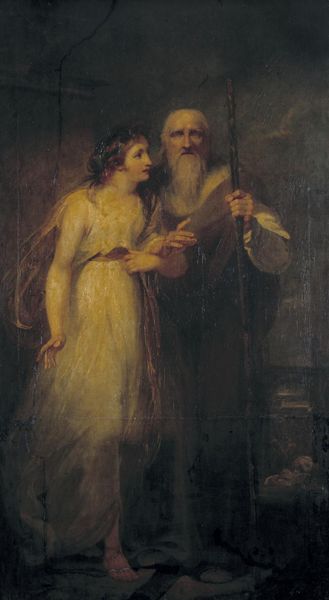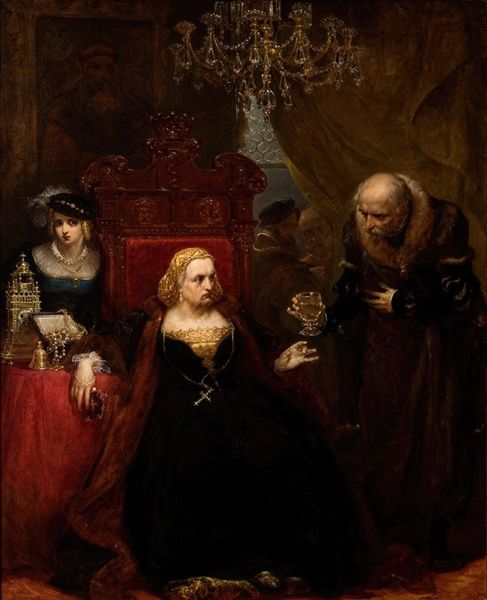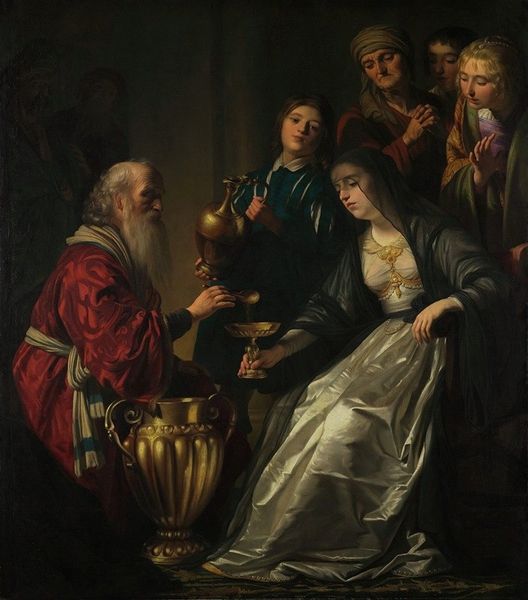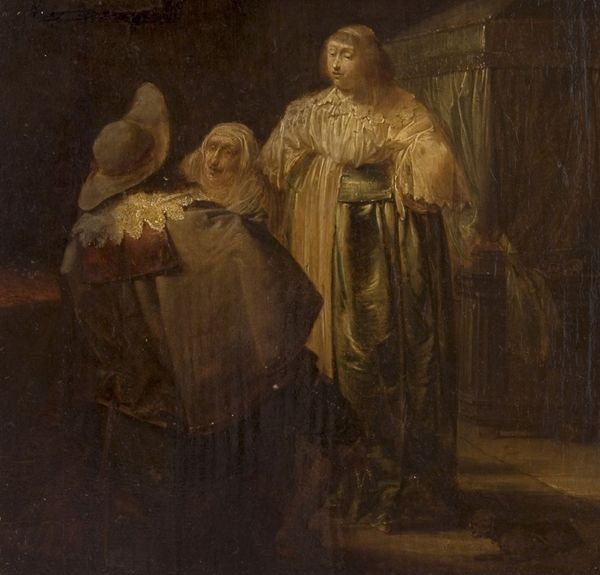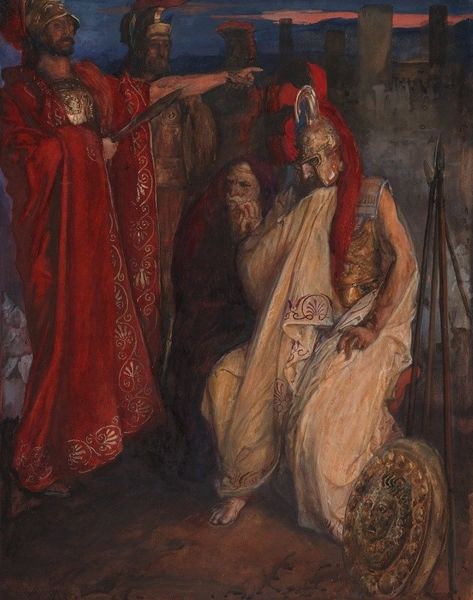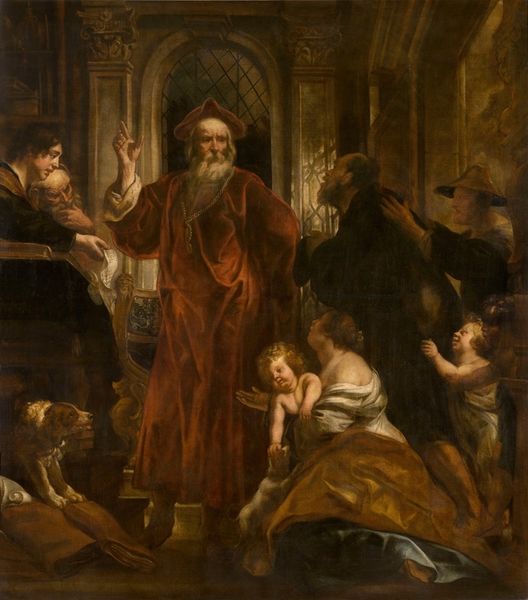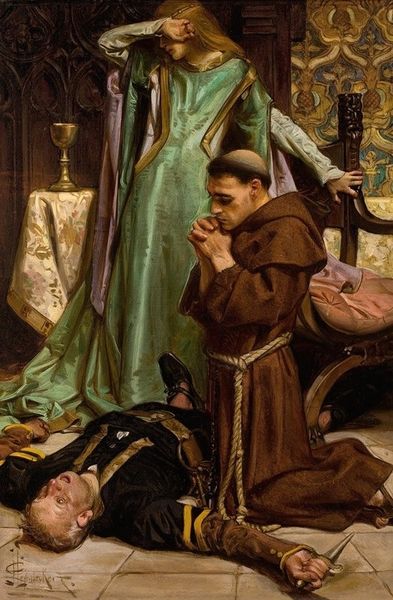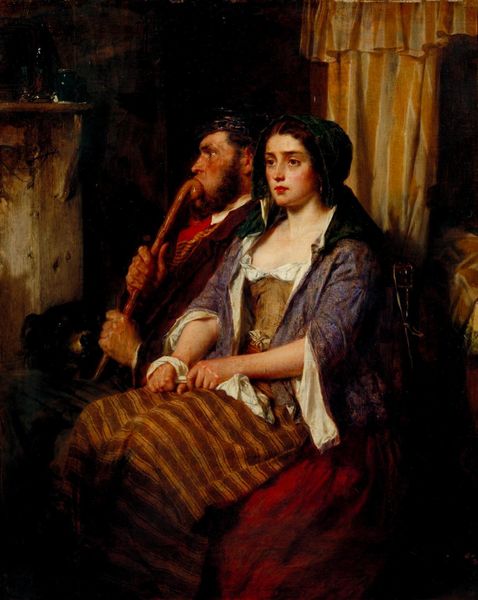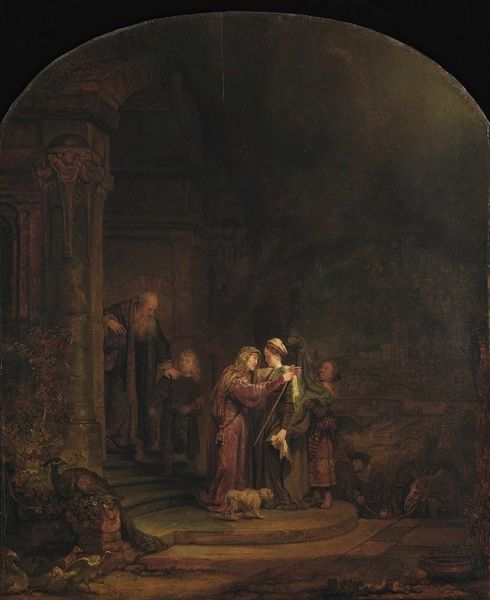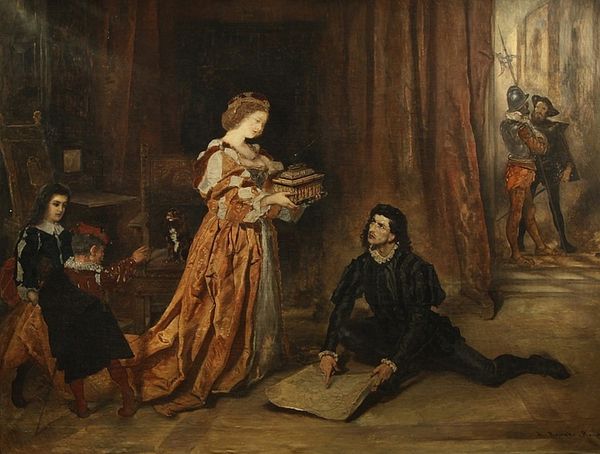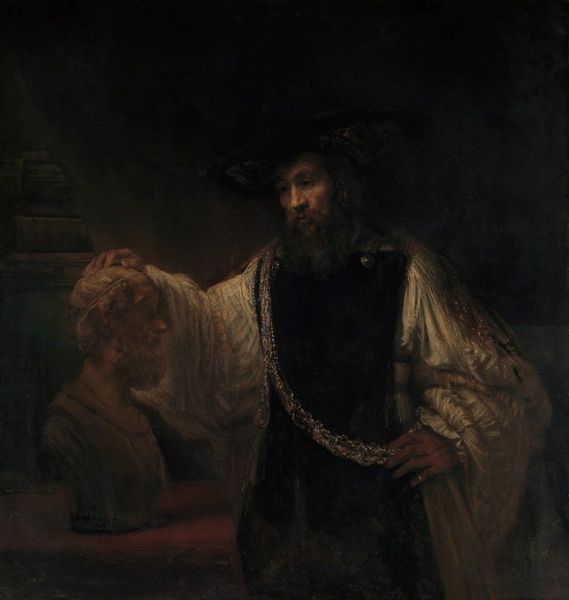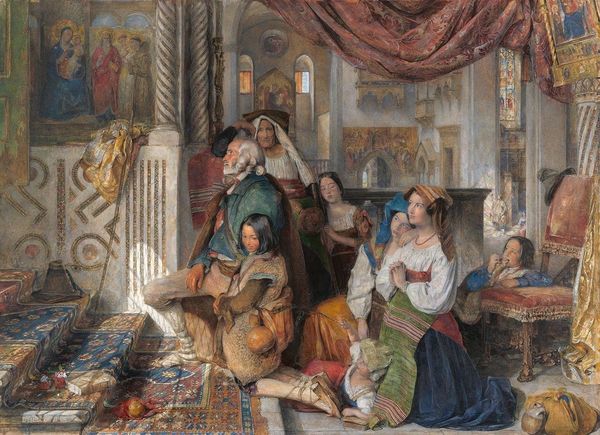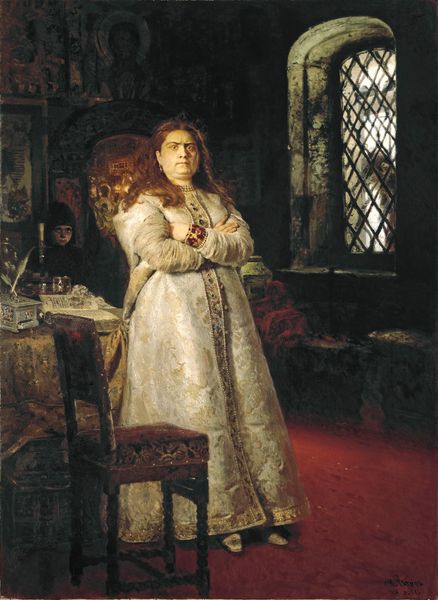
Copyright: Public Domain: Artvee
Editor: So, here we have Jan Matejko's "Blind Veit Stoss with his granddaughter," an oil painting from 1865. There's such a melancholy feeling to it. What I find particularly compelling is how tactile everything looks, the fabrics, the textures. What catches your eye in this piece? Curator: I see a potent commentary on the socio-economic conditions that impacted artistic production. Notice the contrast between the lavish furs draped on Veit Stoss and the presumably cheaper fabrics of the girl’s dress. How might this speak to the evolving patronage system and the changing economic fortunes of artists? Editor: That’s interesting. I was mostly thinking about the personal relationship between them, but considering the material differences is insightful. Is the juxtaposition also a commentary on Stoss's failing career? Curator: Precisely. His blindness, rendered with such attention to the play of light on his face, symbolizes not just physical impairment, but also the potential societal ‘blindness’ to artistic talent in times of economic hardship. It subtly directs our focus toward the structures supporting or suppressing artists’ livelihoods. Editor: So you see the materials as a form of social commentary, more than just… aesthetic choices? Curator: Absolutely. Matejko utilizes oil paint—a commodity in itself, acquired and applied with intention—to create an image that encourages a dialogue about the means and conditions of art's creation, consumption, and how it reflects power. Think about the availability of art materials themselves, what does that say about artistic freedom? Editor: That’s a really thought-provoking way to look at it. I was so focused on the figures themselves that I didn’t really think about the material conditions. Thanks for widening my view. Curator: My pleasure. It’s crucial to remember that art doesn't exist in a vacuum. Analyzing the materiality gives us a new point to anchor our thoughts about history and society in.
Comments
No comments
Be the first to comment and join the conversation on the ultimate creative platform.
